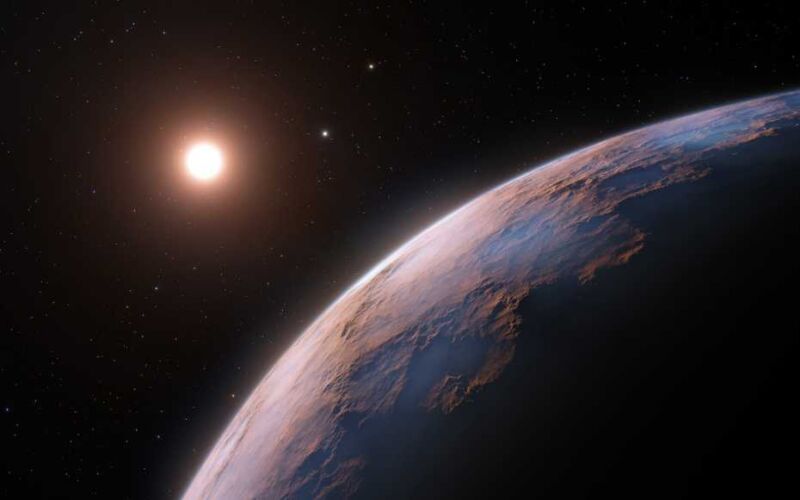How would an Earth-like planet look in Alpha Centauri?

Enlarge / Artist's impression of what an Earth-like planet might look like in a nearby star system. (credit: ESO/L. Calcada)
We now know that our nearest neighbor, Proxima Centauri, is host to at least two planets. But we're not sure if there are any planets near Alpha Centauri, a binary system just beyond that. If there are, however, we now know what they might look like. New research has used modeling and spectroscopic data of the system's two stars to estimate what a rocky planet in the system's habitable zone might be made of.
To estimate the composition of this hypothetical planet-dubbed -Cen-Earth-the team developed what they call a devolatilization model. To start, they looked at the amounts of volatile (hydrogen, carbon, oxygen, etc.) and non-volatile elements (like iron and silicon) in the Sun and the Earth and looked at how they differed.
Armed with this data, the team then looked at high-resolution spectroscopy data about the elements in the Centauri A and Centauri B stars-which provided them information about 22 elements. From their model and this data, they could estimate possible compositions of a hypothetical rocky planet in the system's habitable zone. You get a model of the chemical composition of rocky planets that would be in the habitable zone," Charley Lineweaver, one of the paper's authors, told Ars.
Read 5 remaining paragraphs | Comments